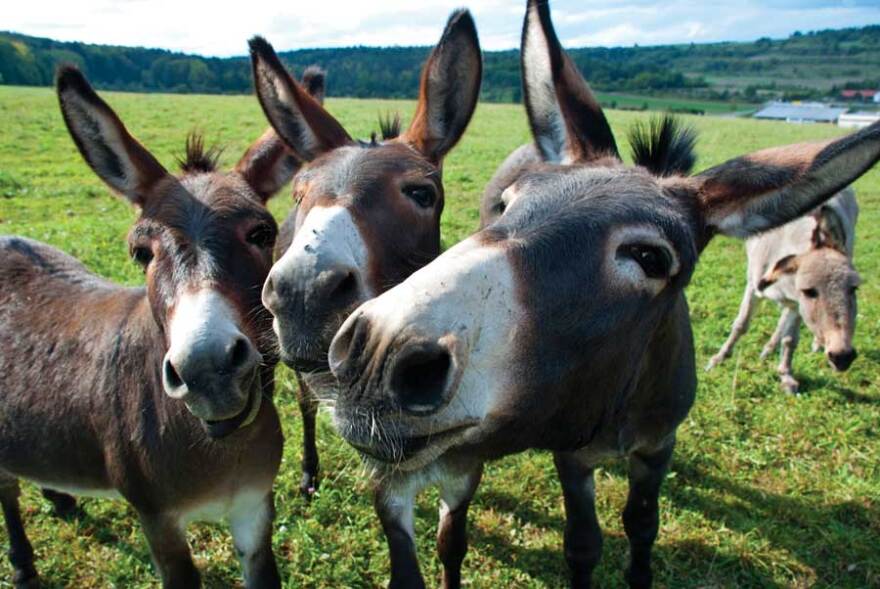Last week I featured music about horses. This week Classical 90.5 will give their long-eared relatives a listen. And while researching this subject, I noticed a crucial difference in musical representations of the creatures. While horses are represented by the "clip-clop" percussive sound of their hooves, donkeys and mules are portrayed by their bray.
The most famous music portrait of a donkey comes from Felix Mendelssohn's music for Shakespeare's A Midsummer Night's Dream. The character Bottom is turned into a donkey and his braying is quite noticeble in the overture.
Camille Saint-Saens famously portrayed donkeys in his Carnival of the Animals - or did he? In the movement titled "Characters with Long Ears" the braying of donkeys is obvious, but some have said it was also Saint-Saens's subtle jab at the braying of music critics of his day.
American Ferde Grofe included the braying and the mule's "clip-clopping" in his Grand Canyon Suite movement called "On the Trail." In fact the whole orchestra makes a huge braying sound at the very beginning of the selection.
The least known of these works is a musical fable with narration by John Rutter called "Brother Heinrich's Christmas." The story tells the tale of a monk who attempts to write a Christmas carol for the monastery's annual Christmas service. In the night he and his best friend - a donkey - are visited by angels who sing the most glorious of carols to them. After the encounter, Brother Heinrich tries to write the carol down but forgets a crucial part of the tune. Luckily, he's got his friend the donkey to fill in with the only two notes he can sing.

